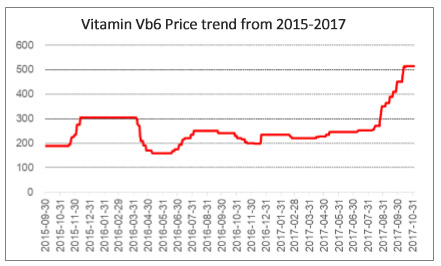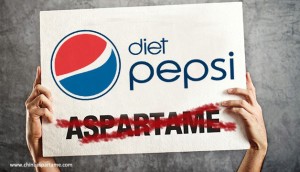What is Pyridoxine?
Pyridoxine, also known as vitamin B6, is a form of vitamin B6 found commonly in food and used as dietary supplement. Vitamin B6 Pyridoxine is required in small quantities to help our bodies grow, develop, and function properly.
Pyridoxine is the 4-methanol form of vitamin B6, an important water-soluble vitamin that is naturally present in many foods. As its classification as a vitamin implies, Vitamin B6 (and pyridoxine) are essential nutrients required for normal functioning of many biological systems within the body. While many plants and microorganisms are able to synthesize pyridoxine through endogenous biological processes, animals must obtain it through their diet.
Other name for Pyridoxine
Vitamin B6,Vitamin B-6, B6, Pyridoxine, Pyridoxine HCl, Pyridoxine Hydrochloride, B Complex Vitamin, B6, Complexe de Vitamines B, Phosphate de Pyridoxal, Phosphate de Pyridoxamine, Piridoxina, Pyridoxal, Pyridoxal Phosphate, Pyridoxal 5 Phosphate, Pyridoxal-5-Phosphate, Pyridoxal-5′-Phosphate, Pyridoxamine, Pyridoxamine Phosphate, Pyridoxamine-5′-Phosphate, , Pyridoxine-5-Phosphate, Pyridoxine-5′-Phosphate, P5P, P-5-P, Adermine Chlorhydrate, Adermine Hydrochloride, Chlorhydrate de pyridoxine
Pyridoxine chemical formula
C8H11NO3
Pyridoxine molecular weight
169.18 g·mol−1
Pyridoxine structure

Is pyridoxine water soluble?
Yes, pyridoxine is water soluble like other vitamin B series: thiamin (B1), riboflavin (B2), niacin (B3), pantothenic acid (B5), biotin (B7), folic acid (B9), Vitamin B12.
Vitamin B6 Pyridoxine food source
The richest sources of vitamin B6 include fish, beef liver and other organ meats, potatoes and other starchy vegetables, and fruit (other than citrus).
Vitamin B6 has a wide range of food sources and is found in both animal and plant foods. Usually with higher levels in meat, whole grains (especially wheat), vegetables and nuts. The bioavailability of vitamin B6 in animal-derived foods is superior to that of plant-derived foods. In animal and plant foods, the content was slight, the content of yeast powder was the highest, and the content of rice bran or white rice was also high. The second was from meat, poultry, fish, potatoes, sweet potatoes, and vegetables.
The amount of vitamin B6 that can be eaten per 100 g of various foods is as follows: 3.67 mg of yeast powder, 2.91 mg of defatted rice bran, 2.79 mg of white rice, 1.25 mg of flax, 0.8 to 0.04 mg of cheese, 0.7 mg of carrot, and 0.45 mg of fish. , Wholemeal extract 0.4 ~ 0.7mg, meat 0.3 ~ 0.08mg, milk 0.3 ~ 0.03mg, egg 0.25mg, spinach 0.22mg, sweet potato 0.14 ~ 0.23mg, pea 0.16mg, soybean 0.1mg, orange 0.05mg.
Role of pyridoxine Vitamin B6
Vitamin B6 plays an important role in the body. Pyridoxine is converted to pyridoxal 5-phosphate in the body, which is an important coenzyme for synthesis of amino acids, neurotransmitters (serotonin, norepinephrine), sphingolipids, and aminolevulinic acid. It’s important to note that Vitamin B6 is the collective term for a group of three related compounds, pyridoxine, pyridoxal, and pyridoxamine, and their phosphorylated derivatives, pyridoxine 5′-phosphate, pyridoxal 5′-phosphate and pyridoxamine 5′-phosphate. Although all six of these compounds should technically be referred to as vitamin B6, the term vitamin B6 is commonly used interchangeably with just one of them, pyridoxine.
Action of pyridoxine or mechanism of action of pyridoxine
Vitamin B6 is the collective term for a group of three related compounds, pyridoxine (PN), pyridoxal (PL) and pyridoxamine (PM), and their phosphorylated derivatives, pyridoxine 5′-phosphate (PNP), pyridoxal 5′-phosphate (PLP) and pyridoxamine 5′-phosphate (PMP). Although all six of these compounds should technically be referred to as vitamin B6, the term vitamin B6 is commonly used interchangeably with just one of them, pyridoxine. Vitamin B6, principally in its biologically active coenzyme form pyridoxal 5′-phosphate, is involved in a wide range of biochemical reactions, including the metabolism of amino acids and glycogen, the synthesis of nucleic acids, hemogloblin, sphingomyelin and other sphingolipids, and the synthesis of the neurotransmitters serotonin, dopamine, norepinephrine and gamma-aminobutyric acid (GABA).
Reference: https://www.drugbank.ca/drugs/DB00165
Vitamin B6 pyridoxine functions
Vitamin B6 is one of the vitamins included in the vitamin B complex family. All B vitamins, including vitamin B6, play an important role in a range of physical and psychological functions.principally in its biologically active coenzyme form pyridoxal 5′-phosphate, is involved in a wide range of biochemical reactions, including the metabolism of amino acids and glycogen, the synthesis of nucleic acids, hemogloblin, sphingomyelin and other sphingolipids, and the synthesis of the neurotransmitters serotonin, dopamine, norepinephrine and gamma-aminobutyric acid (GABA).
Nearly 100 enzyme reactions are mainly involved in the form of pyridoxal phosphate (PLP). Most are related to amino acid metabolism: including transamination, decarboxylation, side chain cleavage, dehydration, and transvulcanization. Vitamin B6 Pyridoxine functions as follows:
- Involved in protein synthesis and catabolism and in amino acids metabolism, such as the metabolism of heme, and tryptophan synthesis of niacin.
- Participates in gluconeogenesis, UFA metabolism. Vitamin B6 Pyridoxine is related to the metabolism of glycogen, sphingomyelin and steroids.
- Involved in the synthesis of certain neurotransmitters (serotonin, taurine, dopamine, norepinephrine, and gamma-aminobutyric acid).
- Participates in the metabolism together with one carbon unit, vitamin B12 and folate, if they are metabolically degraded, can cause megaloblastic anemia.
- Participates in nucleic acid and DNA synthesis. Lack of DNA synthesis can damage DNA synthesis. This process is very important for maintaining proper immune function.
- Vitamin B6 and vitamin B2 is very close, Vitamin B6 deficiency is often accompanied by Vitamin B2 deficiency symptoms.
- Participate in the conversion of homocysteine to methionine, which has the effect of reducing chronic diseases. Mild hyperhomocysteinemia is considered as a possible risk factor for vascular disease, and vitamin B6 intervention can reduce plasma homocysteine Cystine content.
Vitamin B6 Pyridoxine deficiency
Pyridoxine 5′-phosphate, vitamin B-6, is an essential cofactor in various transamination, decarboxylation, glycogen hydrolysis, and synthesis pathways involving carbohydrate, sphingolipid, amino acid, heme, and neurotransmitter metabolism. Pyridoxine deficiency causes symptoms, such as irritability, depression, and confusion have been noted; additional symptoms include inflammation of the tongue, open sores (‘ulcers’) inside the mouth, and ulcers of the skin at the corners of the mouth. Further symptoms are: microcytic anaemia, dermatitis, nervous/muscular signs, irritability, fatigue, numbness, headache, muscle twitching, difficulty walking, convulsions, depression and confusion
Vitamin B6 Pyridoxine pregnancy dose
Pyridoxine is also used for the treatment of nausea and vomiting in pregnancy.
Pyridoxine (vitamin B6) — Pyridoxine can improve nausea, has a good safety profile with minimal side effects, and is easy to obtain; therefore, we generally begin pyridoxine as the initial drug treatment.
As a single agent, the recommended dose of pyridoxine is 10 to 25 mg orally every six to eight hours; the maximum treatment dose suggested for pregnant women is 200 mg/day.
Reference: https://www.uptodate.com/contents/treatment-and-outcome-of-nausea-and-vomiting-of-pregnancy
What is Vitamin B6 pyridoxine used for?
Vitamin B6 Pyridoxine can be used with other B vitamins in many multivitamin preparations for adults and children and added to foods as a supplement to breakfast foods, power bars, and powders.
What is Pyridoxine hydrochloride?
Pyridoxine Hydrochloride, also called Pyridoxine Hcl, is the hydrochloride salt of pyridoxine, a water-soluble B vitamin.
It is a source of the essential B-complex vitamin pyridoxine. Pyridoxine hydrochloride is an important component of enzymes needed for protein metabolism. Besides building muscles, pyridoxine hydrochloride is also very important in helping Human beings and Animals body build protein structures like hair, nails, enzymes, and growth hormones.
Pyridoxine hydrochloride is converted in the liver into the metabolically active coenzyme form pyridoxal 5′-phosphate (P5P), an essential cofactor in many enzymatic reactions in amino acid metabolism, including transamination, deamination, and decarboxylation. P5P is required for glycogenolysis and the synthesis of sphingolipids and is essential to red blood cell, nervous system, and immune system functions.
Properties
Pyridoxine hydrochloride is white or almost white crystalline or crystalline powder; odorless, sour and bitter; Soluble in water, slightly soluble in ethanol. The aqueous solution is slightly acidic. Pyridoxine is an alcoholic vitamin that is a more stable structure that can be heat-resistant in acidic or alkaline solutions. It melts at about 205°C, with decomposition.
CAS No.
CAS No.58-56-0
Chemical structure

Chemical formula
C8H11NO3·HCl
Molecular weight
205.64
Solubility
Solubility in water (200 mg/ml at 20° C)
Pyridoxine hydrochloride benefits
Pyridoxine, or vitamin B6, is one of eight B vitamins. It helps the body convert food into fuel, metabolize fats and proteins, maintain proper functioning of nerves, and produce red blood cells. Vitamin B6 is found in many foods, is added to foods, and is available as a dietary supplement.
Pyridoxine hydrochloride Uses
In feed:Pyridoxine Hydrochloride can be used as feed additives to promote the growth and development of young animals;
In food: Pyridoxine Hydrochloride can be used in food and beverages to strengthen nutrition;
It cosmetics: it can promote hair growth and skin protection when used in cosmetics;
Pyridoxine hydrochloride uses in food
Pyridoxine Hydrochloride, also known as Vitamin B6 and Pyridoxine Hcl, is essential for numerous body and brain functions. It is commonly used in general food fortification and dietary supplement applications to reinforce nutrition in the food. The main uses in Milk powdered drink, Powdered drink, Cocoa powder and other nutritious solid beverages, Wine, Instant Breakfast, Jelly, Soft drinks, Infant foods and Nutritional formula powder for Pregnant woman and etc.
Vitamin B6 can be used to strengthen solid beverages, with a maximum dosage of 7-10 mg/kg; the usage in fortified infant foods at 3 to 4 mg/kg; the maximum amount used in fortified beverages is 1~2 mg/kg.
| Uses & applications | Dosage or Usage |
| Milk powdered drink | 1.20-1.58 mg/100 g |
| Powdered drink | 0.007- 0.01 g/kg |
| Cocoa powder and other nutritious solid beverages | 1-2.2 mg/100 g |
| Wine | 1-2 mg/kg |
| Instant Breakfast | 10-25 mg/kg |
| Jelly | 1.0-7.0 mg/kg |
| Soft drinks | 0.4-1.2 mg/kg |
| Infant foods | 3-4 mg/kg |
| Liquid drink | 1-2 mg/kg |
| Milk powder | 8-16 mg/kg |
| Nutritional formula powder for Preschooler | 0.2-0.4 mg/d |
| Nutritional formula powder for Pregnant woman | 0.63-1.27 mg/d |
Pyridoxine hydrochloride uses in feed
Vitamin B6 has the form of pyridoxal, pyridoxamine and pyridoxine, they have the same potency for animals, but the stability of the former two is poor, and vitamin B6 is usually means pyridoxine when as a feed additive and the form is Pyridoxine hydrochloride. Pyridoxine hydrochloride is very stable in the application of dry, inert carriers and various vitamin premixes. In the coexistence of choline chloride and trace element minerals, especially in the presence of trace element oxides and carbonates that react with alkalinity, pyridoxine hydrochloride is easily destroyed.
Pyridoxine hydrochloride is an important coenzyme in poultry, poultry can not synthesize vitamin B6, must be taken from the feed. Its deficiency is a nutritional metabolic disease characterized by decreased appetite, short bones, and neurological symptoms.
Pyridoxine hydrochloride uses in poultry
Vitamin B6 deficiency mainly causes protein and fat metabolism disorders, impedes the synthesis of hemoglobin, and damage to the nervous system, resulting in obstructed growth and development of poultry, causing anemia and degeneration of nerve tissue, and thus has poor growth, anemia, and characteristic neurological symptoms. The deficiency of vitamin B6, chicks mainly exhibit neurological symptoms: abnormal excitement, no purpose running, flapping wings, and sagging head. Then a generalized convulsions occurred, the movement was disordered, the body turned sideways, and the head, neck, legs and legs twitched, and finally died of exhaustion.
In addition, the diseased chicks suffer from poor appetite, slow growth, rough feathers, unkemptness, pale cocks, and anemia. Adult chickens suffer from loss of appetite, weight loss, decreased egg production, low hatching rate, anemia, atrophy of the crown, flesh, ovary, and testicles and eventually death. Ducks showed pale anaemia and generally had no neurological symptoms. Post-mortem examination of dead chickens with subcutaneous edema, enlargement of internal organs, degeneration of the spinal cord and peripheral nerves, and sometimes hepatic degeneration.
The suggested dosage in poultry is 3~5 mg/kg.
Pyridoxine hydrochloride uses in aquaculture
Pyridoxine hydrochloride is a necessary Vitamin to maintain the health of aquatic animals and promote growth and development. It cannot be synthesized or synthesized in the body by other substances and must often be fed by food. If the intake is insufficient in long-term or cannot meet physiological needs due to other reasons, it will lead to metabolic disorders of fish, shrimp, growth retardation and resistance to disease. The suggested dosage in aquatic animals is 3~50 mg/kg.
Pyridoxine hydrochloride uses in pet food
Pyridoxine hydrochloride is the most common form used when supplementing pet foods with the B-vitamin pyridoxine. Pyridoxine is very important in helping the pet metabolize protein. It can be used in dog and cat food, also it can be used in pig food. The suggested dosage in pig is 1~3 mg/kg.
Pyridoxine hydrochloride side effects
Pyridoxine hydrochloride is LIKELY SAFE for most people when used appropriately. Pyridoxine hydrochloride is POSSIBLY SAFE when taken by mouth in amounts greater than the recommended dietary allowance. In some people, pyridoxine hydrochloride might cause nausea, vomiting,stomach pain, loss of appetite, headache, tingling, sleepiness, and other side effects.
Reference: https://www.webmd.com/vitamins/ai/ingredientmono-934/pyridoxine-vitamin-b6
Although vitamin B6 is a water-soluble vitamin and is excreted in the urine, long-term supplementation with very high doses (excess of 1,000 mg per day) of pyridoxine may result in sensory neuropathy. However, there have been a few case reports of individuals who developed sensory neuropathies at doses of less than 500 mg daily over a period of months. Yet, none of the studies in which an objective neurological examination was performed reported evidence of sensory nerve damage at intakes below 200 mg pyridoxine daily.
Pyridoxine hydrochloride Market
VB6 is a water-soluble B vitamin that is an important nutritional supplement for humans and animals. In recent years, with the deepening of clinical research, vitamin B6 has many new discoveries and new uses. Vitamin B6 can promote the absorption of amino acids and protein synthesis, is also involved in fat metabolism, mainly in clinical use for vitamin b6 deficiency; isoniazid poisoning; vomiting, anemia caused by pregnancy, radiation sickness and anti-cancer drugs; leukopenia and Seborrheic dermatitis and so on.
At present, the manufacturing process synthesis of pyridoxine hcl used in China is an improved oxazole method, and its raw materials involve L-alanine and oxalic acid and ethanol. With fewer steps, high yields, and easy quality control, the production cost is greatly reduced. Many domestic companies have adopted this technology, which has enabled China to rapidly expand its production scale, rapidly increase production, significantly reduce costs, and greatly increase market competitiveness.
Huge demand as feed additives
Vitamin B6 is an important feed additive, and it is used in a large amount in the international market, almost exceeding the amount of pharmaceuticals. China’s aquaculture industry also accelerates the development, and every year it needs to add more than 100 million tons of feeds such as various vitamins, accounting for about 50% of the total amount. It is expected that the rigid demand for feed additives such as VB6 in the domestic and foreign markets will be enormous.
Rich pharmaceutical-grade products
Vitamin B6 has become a widely used vitamin product in clinical applications. Its tablets and injections have been listed in China’s “National Basic Medical Insurance, Industrial Injury Insurance, and Maternity Insurance Drug List”, which are classified as Category B and Category A.
Vitamin B6 is also the first group of non-prescription drugs to enter China. There are more than 20 formulations of otc drugs that now involve vitamin B6. In addition to single tablets, there are compound nine-dimensional tablets, ten-dimensional tablets, Victoria iron tablets, children’s four-dimensional calcium glucomate tablets, multivitamin tablets, 14 multi-dimensional elements, 15 multi-dimensional elements, 16 multi-dimensional elements and so on. In addition to the treatment of diseases, health products almost occupied the vitamin B6 market, and the market sales were very large. In 2014, annual sales of vitamin B6 health products reached more than 80 billion yuan.
Pyridoxine hydrochloride manufacturers and price
China is the big food and feed grade Vitamin B6 manufacturers and export country in the world. China manufactures’ market takes around 70%.

At present, the annual demand for vitamin B6 is around 7,000 tons and the total production capacity is more than 9,000 tons. Last Q4, the fourth environmental inspector and Beijing-Tianjin-Hebei air pollution control have had a major impact on the normal manufacturing of VB6. More than 60% of all VB6 manufacturers are located in the fourth environmental protection inspection and 2+26 urban areas. On September 19, 2017, a fire accident happened in one of the producer and it was expected that it will take a long time when it resume production. (It is estimated the factory will resume soon, updated on 06/01/2018)
In addition, the export volume in the same period will increase by a large margin, which further exacerbates the tight supply situation of VB6. In the first half of 2017, the market price of VB6 was basically around RMB 240/kg. Starting from July, VB6 started the price increase. In July and August, it rose slightly by 3.1% and 5.0% respectively. In September, it rose by 30% within one month. October has risen 14% so far, and the price hike continues. Price updated on Sep/2017: The current price was 515 yuan/kg, which was 119% higher than the 235 yuan/kg at the beginning of the year.
Today’s price
Updated on 2018/05/26: Now the price for feed grade is around RMB280/kg, the price in January was around RMB520/kg, it decreased more than 50%.
Where to buy pyridoxine hydrochloride?
You can buy food or feed grade pyridoxine hydrochloride from us, Specification complies with BP/USP/EP/JP/FCC standard.
We’re committed to the quality and safety of our ingredients. We know that our customers expect us to use only the highest quality food additives & ingredients with better price, and we do everything we can to satisfy those expectations.
If you have any other questions, please email us through: info@foodsweeteners.com




